Guide to Using Interactive Notebooks in the Science Classroom
I've been working with science interactive notebooks for several years in the classroom and the question that I see come up over and over is, "How do you use them effectively in your class?" Let's talk about it.
What are Interactive Notebooks?
When I first showed Science Interactive Notebook Templates to another teacher on campus, the response I received was “that’s a colossal waste of time”. The initial mindset I was met with was that students would be wasting valuable time cutting and pasting rather than learning. I respected that narrow-minded opinion but wholeheartedly disagreed with the conclusion. I have personally seen tremendous growth from a wide variety of students in my classroom and would never consider teaching without them. The addition of digital templates to the Science Interactive Notebook Bundle removes the barrier to entry that some teachers may have with INB’s.
The short answer is that interactive notebooks are a fun and engaging way to get students interested in the content they are learning about.
Interactive notebooks allow for the information being discussed to be compartmentalized into chunks of information. I have found when information is broken down into smaller bits that students retain the information at a much higher level. When you throw in an interactive element into the graphic organizer the retention is that much more effective.
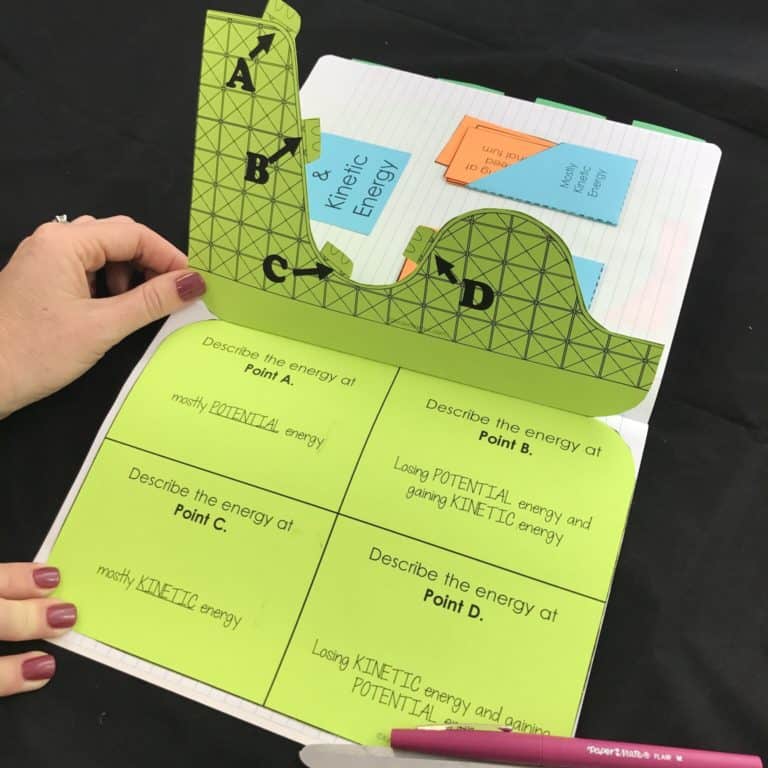
Interactive notebooking is not simply a student copying notes from the board into a cute template. That can certainly be one aspect of it. The true interactive part of the notebooks is when students use the information provided to elicit their own responses in the journal. This requires higher-level thinking and ultimately allows the students to make a deeper connection to their learning. Some teachers who use INB’s choose to use the left side/right side method, but I found that to be a bit limiting and was often a waste of space. If my classes are any indication there will be a point early on in the year where the students bond with their notebooks and truly take ownership of them. Prior to the interactive notebook, I only saw those connections with higher achieving students.
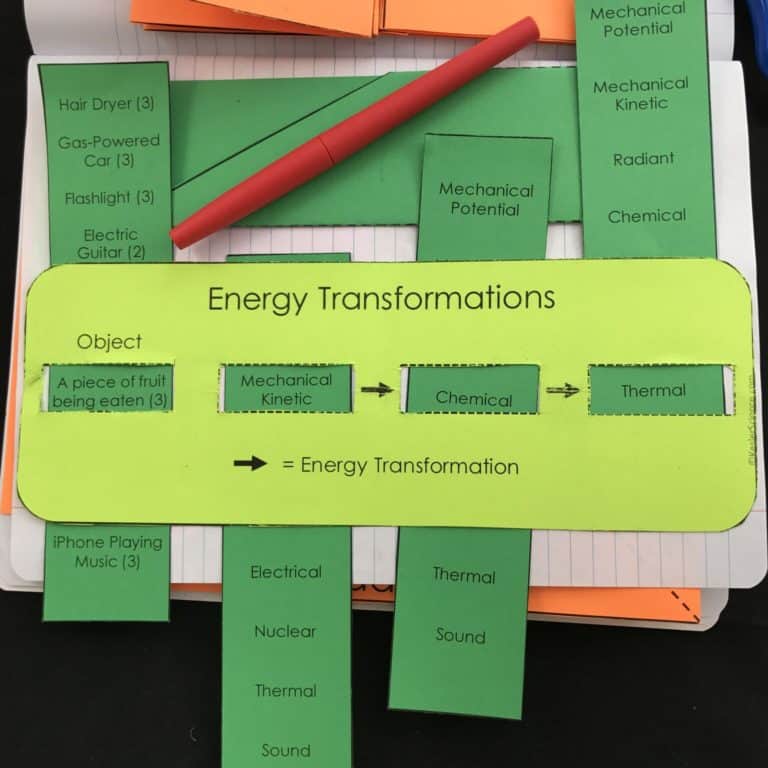
Interactive notebooks can also be completely digital. Schools and districts are rapidly moving towards 1:1 which allows interactive notebooks to evolve to move into the digital world with students.
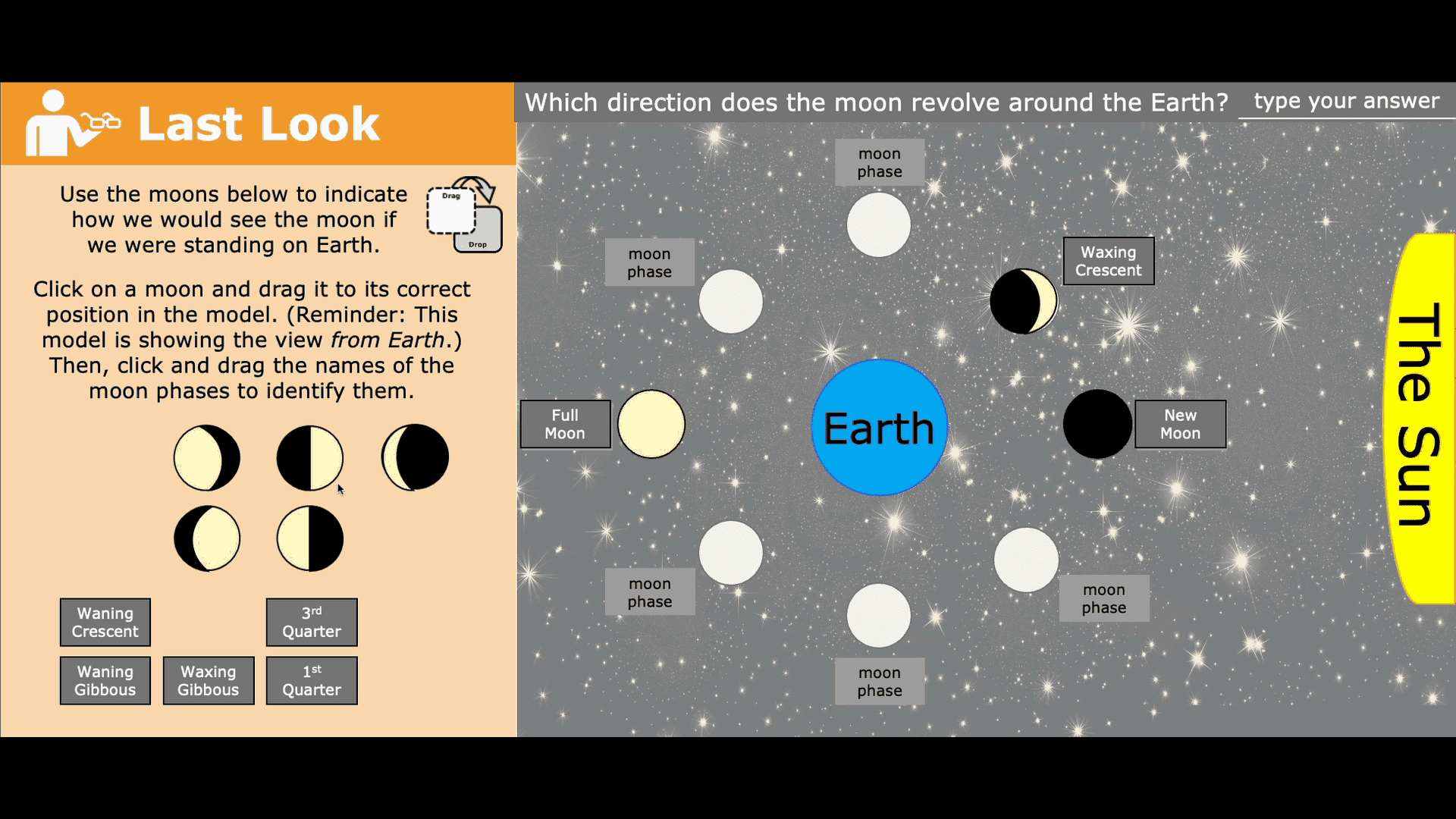
Another huge advantage to interactive notebooks is that it allows students to be totally creative with their notebooks. Creativity is often pushed out of our classes in exchange for more inputs. Knowledge is great, but looking back at my own schooling I wish I had been given the time to cultivate my own creativity. I didn’t learn the creative process until I was an adult and feel I may have been somewhat cheated in school. Creativity and innovation are at the forefront of the skills that many employers seek. We should certainly be valuing them in the education system.
.jpg)
The last piece of why I believe in interactive notebooks is that they become an all-encompassing resource for the students. I wrote an article about why students should be allowed to use their notes on all assessments and feel strongly about using interactive notebooks in these situations. The INB will become a comprehensive resource throughout the year that should be used whenever possible.
If the student’s learning is the number one concern in the classroom then I fully believe interactive notebooks will allow them to grow with your content. They are highly versatile and can be used in elementary all the way through high school.
Secondary Benefits of Interactive Notebooks
Student achievement is the primary goal, and INB’s help to achieve that. There are also some byproducts of using interactive notebooks in class.
INB’s allow the teacher to visually see growth or deficits within a student simply by taking a glance at the notebook. I’m able to praise or help struggling students in real-time with a quick walk around the classroom.
Administrators and parents are also very appreciative of interactive notebooks. There is immediate feedback they receive by looking into the student’s notebook. Parents can make a quick assessment of their performance in class. Administrators can also evaluate the teacher very quickly without even having to be in the classroom just by looking at a student’s journal. This is a win-win for the teacher.
Physical Science Interactive Notebooks
Each teacher will need to decide what works for them, but I’m going to first discuss the logistics for physical interactive notebooks. If this part fails in your class then you can expect to have problems throughout the entire year. You need to have a process in place for each of the following questions.
- How can students easily identify their notebooks?
- How do students get their ISN?
- How are supplies distributed?
- How do students cut out the templates and how long should that take?
- How much glue should you use?
- How do you dispose of trash?
- What do you do if you were absent?
- How do they put up the interactive notebooks?
1. Identify the notebook – Composition notebooks all have a black spine and it makes if very difficult for students to identify their own notebook. One solution I have seen is to allow students to use colored duct tape (Amazon affiliate link) to put on the spine of the notebooks and then write their name in marker. You could allow each student to use their own tape or maybe use a different colored tape for each period. This is something that can easily be handled when setting up the notebook and will save you a ton of headaches.
2. Getting out the Interactive Notebook – The ideal situation is for each student to be able to keep track of their interactive notebook and bring it with them to class each day. I taught 8th grade and this would have been asking WAY too much. I kept all of the student journals in a large book cabinet at the back of the classroom that was separated by period. I will also suggest that crates are the perfect size for one class period’s worth of journals. You could have a crate for each class. My partner found it effective to bring the journals up to the front of the room and have students pick them up as they walked in. You could have a student do this job also. Another effective method would be to have one student pickup the journals for their entire lab table or group. The goal here is to avoid congregation around a particular area. When the bell rings I need to begin and having 30 students climbing on shelves to find their notebooks is a recipe for total failure.
3. Distribution of Supplies – When you’re using interactive notebooks you are going to need glue, scissors, and templates. The most effective way I found to distribute materials were to have the supplies waiting on the desk for the students. The glue and scissors were stored in boxes that went to each lab station. At the beginning of the day I would just split my template copies into even stacks and put them at each station. Students knew this was the activity they would be working on that day. There were no papers to pass out throughout the day, and it saved a lot of downtime
3. Cutting the templates – The first few times you allow students to cut out templates you need to have a bit of patience. However, cutting and pasting is not what your class is about. The most effective way I found was to keep my own journal with the template already put into it. I would quickly show them what it would look like, and then I would set a visible timer on the board and tell them it had to be done in X number of minutes. Once the time ran out, I began. Was there a couple of stragglers? Of course. Did I wait for them? No. They soon learned I was going to start when the time ran out.
4. Using the glue – Although I love glue sticks I found they didn’t last near as long as small bottles of white glue. These are great items to ask for at open house. Parents love helping teachers out, but you have to ask them. My experience has been that students have very little understanding of how much glue is necessary. You will have to tell them early and often to use drops of glue rather than squeezing the entire bottle out on one template. I heard a tip once that if you use the little glue bottles students are more responsible with the glue because they don’t want it to run out.
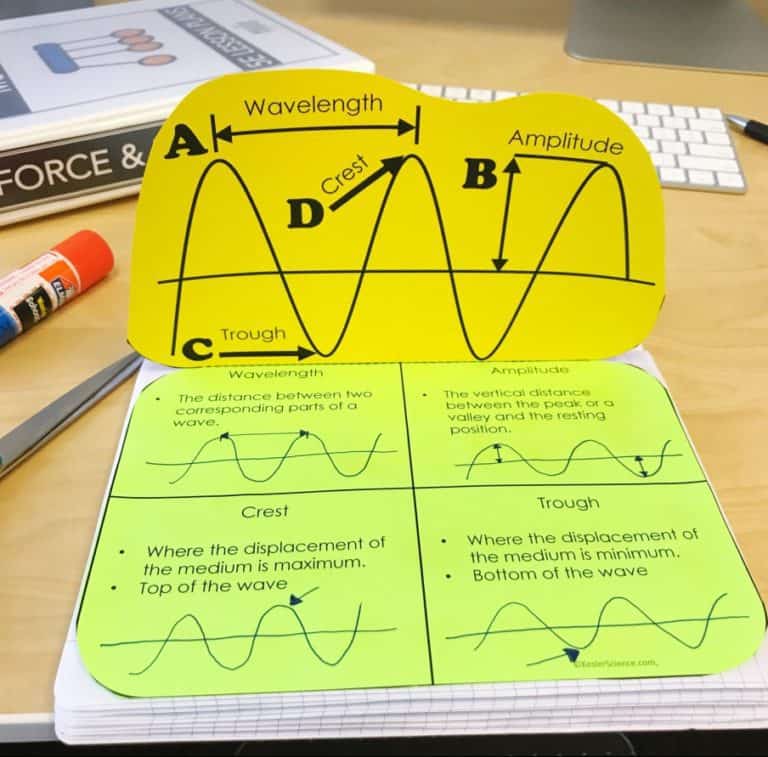
5. Picking up trash – This is another area where you classroom can go from quiet to chaotic in .37 seconds. The last thing you want is 10 people getting up to try and make trashcan baskets from 10 feet across the room. I always had the first student finished take the trashcan around and didn’t let anyone else get up. This was very effective. I’ve also heard of teachers putting a small bin at each of the lab stations for kids to use throughout the day. This would save the class from unnecessary movement. The last period could be responsible for emptying them in the trash or recycle bin.
6. Did we do anything yesterday? – No, we just sat there and waited around for you to get back with our thumbs in our ears. Have a spot in your classroom where extra INB templates can be found along with a copy of the notes from the teacher INB. The student can grab the ones they missed and get them into their journal on their own time. I would also consider asking an early finisher to cut you some extra copies of the templates to have for absent and/or modified students. You definitely want to have templates pre-cut for some of your modified students. Let a student do this for you.
7. End of class – You need to figure out an orderly way to get the journals back in their correct spot. If you allow everyone to get up there will be journals thrown all over the place. I would either pass around the crate or have the same person that got the journals out put them up. It makes it very easy to grab all 4-5 journals the next day if they are all together when they are put up. I always picked up about a minute before the bell to ensure the class left on time.
Digital Science Interactive Notebooks
Using digital interactive notebooks removes several of the barriers that physical INB’s have. You no longer need physical supplies like notebooks, paper, copies, glue, and tape. They can also save quite a bit of time because the prep work has been done for you.
However, one of the main disadvantages of digital interactive notebooks is that students no longer have a physical resource in front of them that can be quickly referenced. This can also be seen as an advantage because they don’t have to keep up with it if you have provided clear directions.
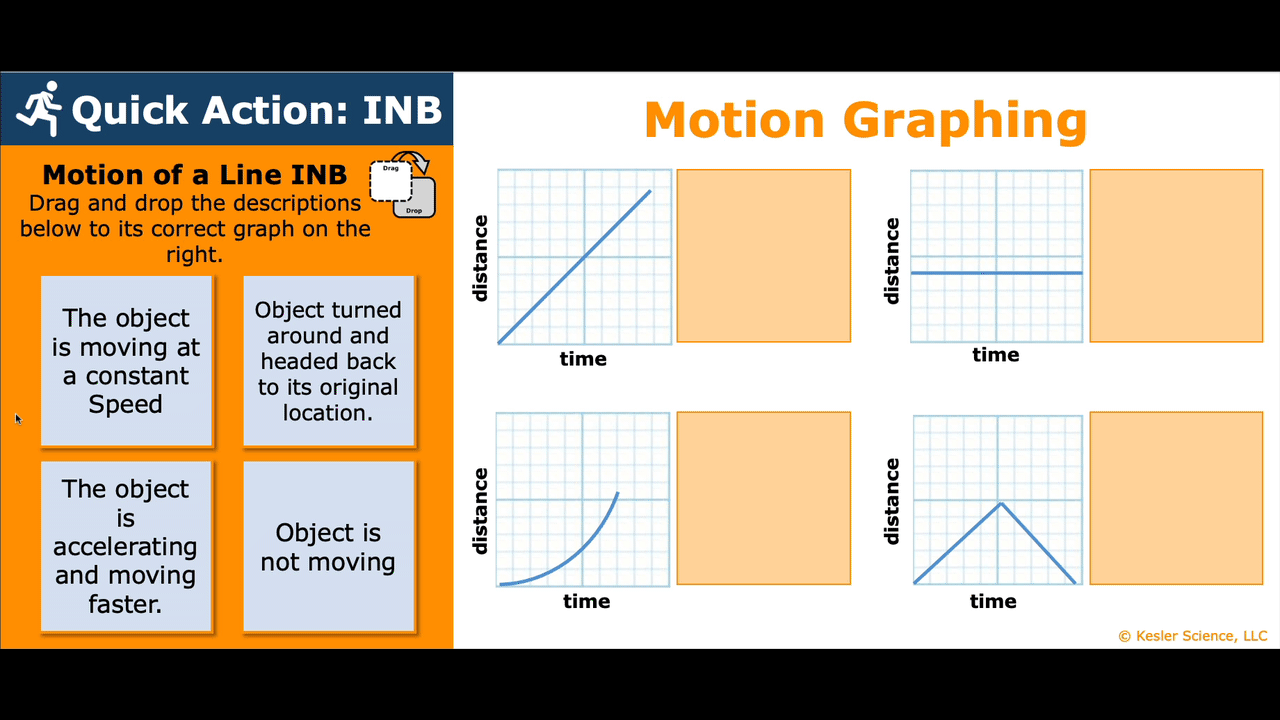
You need to have a process in place for each of the following questions.
- How are the digital INB templates created and what tech will my students need?
- Where do students store their digital INB’s?
- How does the teacher distribute digital INB’s?
- How do students submit their work?
1. What tech is needed? – All of the digital templates from the Interactive Notebook Bundle were created using PowerPoint. However, the documents can easily be uploaded to Google Slides and used there without any formatting issues.
2. Storing Digital INB’s – I would strongly encourage that each student has a specific folder in their LMS or on Google Drive for nothing but Digital INB’s. I would also suggest that each template have it’s own file rather than storing them in one large file. Storing them in many files allows the students to find what they need more quickly and can also eliminate the possibility of deleting all of their work with one mistake.
3. Distribution of INB’s – The teacher should consider sending the same file out to all students and use the same file name structure throughout the year. For example: Lunar Cycle Digital Interactive Notebook
4. Submitting Work – Every teacher is going to have a different process for submitting work based on the different technologies in classrooms around the country. Make the process clear to the students so that they can confidently submit work to you throughout the year.
Setting Up the Science Notebook
There are many ways to set up the interactive notebook, but I prefer to have students buy composition notebooks rather than a spiral or other type of notebook. It’s nice to have some uniformity in the notebooks, and these babies can get THICK. On the first day of class, I usually give my lesson on why I prefer cupcakes rather than crumpled cookies. It’s a good starting point for letting students know how serious the notebook is going to be. I want HIGH-QUALITY work. This is the most important tool they will use in my class, and I make sure not to understate the issue.
In the first few pages of the notebook I like to include the following items:
- Table of Contents
- About Me (the student)
- Periodic Table
- Formula Chart
- Signed Classroom or Lab Safety Contract
- Vocabulary (index)
I can make a million excuses, but I was never really good at keeping up with the table of contents for my classes. I think it is a brilliant idea to have one, but I was pretty ineffective in this area. Ideally, the students should be on the same page as you are in the journal. This makes it much easier to use as a reference tool and can set a benchmark of what a great journal should look like. If you choose to do a table of contents it is probably wise to number all of the pages when setting up your journals.
The about me page is really just an information page about the student. You can be as specific or broad as you want to on this page. You could also use it as a getting to know you activity at the beginning of school.
In Texas, students are given the periodic table and a formula chart on their state test. It is imperative they know and understand these two documents. By including them at the front of the journal they can be referenced very easily.

A classroom contract or lab safety document is a great document to have in the journal. If there is ever an issue that needs to be addressed you can easily point to the signed document to put the ownership back on the student for their behavior.
Lastly, I included an index of all the vocabulary words from my class. This document is about 6 pages but is a great reference tool for students throughout the year.
Using the Science Interactive Notebook
I’m going to use this last section to describe how I used the interactive notebook in my classroom and provide you with some tips to ensure that your interactive notebook experience is a positive one.
On the days that we had to cut and paste an INB template I would make it a warm-up. Many students would have it almost completely finished by the time the tardy bell rang. I would still allow for a couple of minutes to complete the task, but this was a big time saver. This shouldn’t be a free for all time. I would use this time to review material from the prior lesson or to review for an upcoming assessment. The second you allow students to use this time as free time you will find that everything sllooooowwwwss down. This is a point of contention with a lot of teachers who think interactive notebooks are a ‘waste of time’. They don’t have to be. You are in control of the situation. Time is only wasted if you let it be.
I always modeled exactly how I wanted things to go into the ISN by using a document camera. When I required students to have certain information on the board the exact phrases I wanted them to write were either in the presentation or in my journal, which was displayed on the board. It made it much easier for students to get the correct information.
I mentioned earlier that I don’t do the whole left-right thing. I absolutely allowed time for original thought and students reflection in their journals, but the input-output bit didn’t work for me in my class. I believe that in order for the students to begin to make the connection with their journal that you need to provide time for them to think and reflect. Let them come up with examples and sketches. Let them come up with short answer situational responses. Let them make connections to other learning. This is where the magic happens and shouldn’t be forgotten.
My class was run with a lot of student-led labs. I did not have the students put these answer sheets into their interactive notebooks. These were to be kept by the students in a separate binder which stayed with them, as opposed to being left in my class. There simply was not enough room in the composition notebooks to include them.
Looking for Interactive Notebook Templates?
I’ve created hundreds of interactive notebook templates for science notebooks. Each template comes with a student copy, answer key, teacher key (great for absent students), and high-quality images showing how to use it.
Download Over $100 in FREE Resources
For Middle School Science
Simply create a login below and gain immediate access to a selection of our Kesler Science product line worth $100 - for FREE. There's a full version of every product type! You'll also join tens of thousands of middle school science teachers who receive timely tips and strategies straight to their inbox.


.png)
.png)



